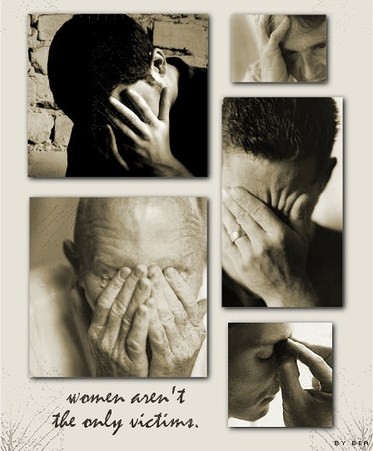Male Rapes – Some Myths, Statistics, True Incidents and Legal Insight
Is Rape attempted only on females? I would request you to think again. Male rapes are not fiction created in novels and movies. What happened in Shawshank Redemption can happen to anyone at any place.
Shikhar (name changed) was popular at his college for being a philanderer. He had multiple girlfriends and at age of 22, he had everything a student could aspire for. He shared his room with two of his classmates. His relations with them were not cordial. He had some unresolved issues with them. One night when he was sleeping, he realized that his room mates were tying him to the bed. He was repeatedly raped (sodomised) by both of them that night.
The incident changed Shikhar’s life completely. Even after two years, he hasn’t dated any girl or talked about sex with his friends. The very talk of sex upsets him. He also tried attempting suicide once to get rid of miserable life. Only two of his friends were aware of what happened to him that night, but even they were unable to console him in this situation. Similar to other instances of male rapes, the matter went unreported.
Male Rapes: Some Shocking Statistics
About 10% of rape victims are men. Findings From the National Violence Against Women Survey, US points out that 71% of male victims were first raped before their 18th birthday; 16.6% were 18-24 years old, and 12.3% were 25 or older. U.S. Bureau of Justice Statistics (1999) estimated that 91% of rape victims are female and 9% are male Human Rights Watch Report suggests that 22% of male inmates have been raped at least once during their incarceration; i.e. around 420,000 prisoners each year.History of Male Rapes
In some societies the victorious soldiers were given a right to rape the defeated enemy. The act demonstrated a total control over the defeated warrior. It was believed that whether consensual or forced a male who has carnal intercourse looses his manhood and is thus incapable of becoming a ruler or warrior. Gang Rapes of a male as a punishment was awarded for crimes like adultery in Rome and Violating the sanctity of Harems in Persia and Iran.
Who are the Victims?
Most of the people believe that males are victims of rapes only in jails, prisons and hostels but statistics reveal that these are not the only places where males get traumatized. A large number of males become victim of sexual assaults and forced sodomy in their own houses, pubs and armed forces.
The perpetrators avail the benefit of their victim’s vulnerable condition. A popular notion prevails that a male is supposed to protect himself and if he fails, he has lost his manhood. Like most of the rape victims, these victims start holding themselves responsible to the injustice done to them. The thought that “they have lost their manhood” results in their continuous victimization. Most of them start doubting themselves and may even fail to have healthy sexual lives with their spouses. A very few cases of male rapes are actually reported. The offense is considered difficult to prove and the perpetrators are often acquitted. Out of 852 cases that were reported to police in the UK, only 44 perpetrators were prosecuted. Ironically, the victim who confesses that he had been raped or sexually assaulted is punished by the entire society. The feeling of guilt and shame makes him detest himself and his very existence. The rape is not only committed on his body but also on his mind, soul and spirit.
Indian Penal Code and Male Rape
Section 377 of the Indian Penal Code is the only section that criminalized all acts of carnal intercourse. The section penalizes both consensual and forced sodomy. The minimum punishment awarded of such crimes 10 years which may extend to life imprisonment. The Delhi HC in its leading judgment of Naz Foundation v. Government of NCT and Ors stated that the provisions of Section 377 I.P.C will continue to govern non-consensual penile, non-vaginal sex and penile non-vaginal sex involving minors. Even if the judgment is upheld by the honorable SC, the section can be evoked to punish sodomists, pedophiles and zoophiles.
The only laws that remotely address to the problems of child assault in the country are sections 376, 377 of Indian Penal Code and some sections of the Information Technology Act, 2000. But there is no specific law that can punish pedophiles or can compensate the victims of such events.
The Section 375 of Indian Penal Code does not include males as rape victims. Recently the government decided to amend the definition of rape and replace it with sexual assault instead. They believe that the amendment would give the section a wider jurisdiction and scope. But it is criticized that the proposed amendment would further harm the interests of the rape victims.
Conclusion
It is unfortunate that till now people associate manhood with sexuality. Manhood is not lost by a victim who was sodomized but it is lost rather it does not exist in the perpetrator who committed this heinous act. It is a myth that only gay men commit such crimes. The offender can be bisexual, straight or homosexual. India definitely needs separate laws to deal with male rape or forced sodomy and child assault. Majority of such crimes remain unreported and therefore awareness must be spread in this regard. The benefits availed by female rape victims under the Cr.Pc must be also extended the male victims. Helplines and Online-help can be provided which may prove helpful in providing psychiatric help to them.
Ignoring Male Rapes won’t change anything but accepting it would surely make a difference.
Read more

